How I Tackled the Alps Divide Part 2: The Bike and Equipment
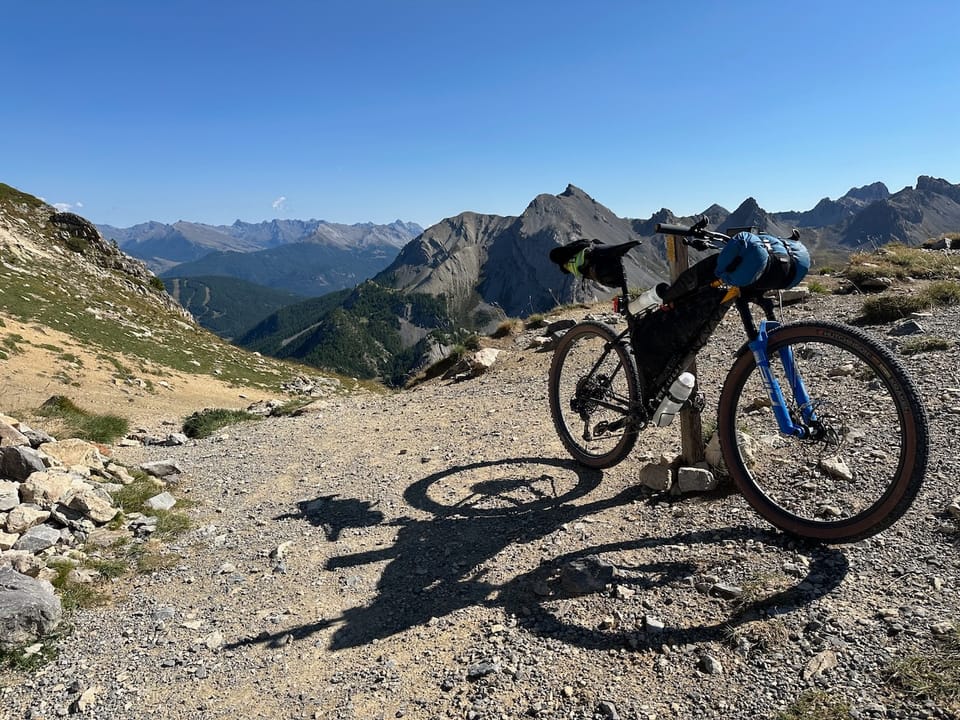
In part one, I covered how I trained and prepared for the Alps Divide. Now, I’ll break down the bike setup and gear I used to tackle the race. I don't think there's really much gear here that's changed since my first event, aside from a few clothing options. The bike has changed a bit though.
The Bike
Aside from the Hope 1000, I’ve raced all my off-road events on my Norco Britango. For the Alps Divide, I made a few key upgrades:
- Forks: Swapped out the 140mm Pikes for Rockshox Sid 120mm. They’re lighter, but the lockout feature made the most difference.
- Wheels: Went with Specialized Roval Control SL, mainly to reduce pinch flats with their wider beads. They didn’t stop all flats (I had one near the end), but they likely prevented a few.
- Tires: Switched to Hutchinson Kraken 2.3 Hardskins after bad luck with ripped sidewalls on Vitoria Mezcals. They worked well until I had a pinch flat and a near ride-ending tear in the final hours. Previously I used a tire insert to stop pinch flats, but ended up throwing one away in Greece as I was forced to put an inner tube in due to a big sidewall tear that would no-longer hold air.
Then the rest has served me well in the past, so no need to change:
- Drivetrain: Standard SRAM GX 12spd (10-50t) with a 30t chainring.
- Brakes: Hope Tech 3/e4 brakes with 203/180 rotors. Big brakes are essential on a loaded 20kg bike.
- Cockpit: OneUp carbon handlebar with knock-off SpirGrip inner bar-ends for extra hand positions, plus EDI silicone grips—no gloves unless it’s cold.
The bike weighs around 12kg un-loaded in this configuration.
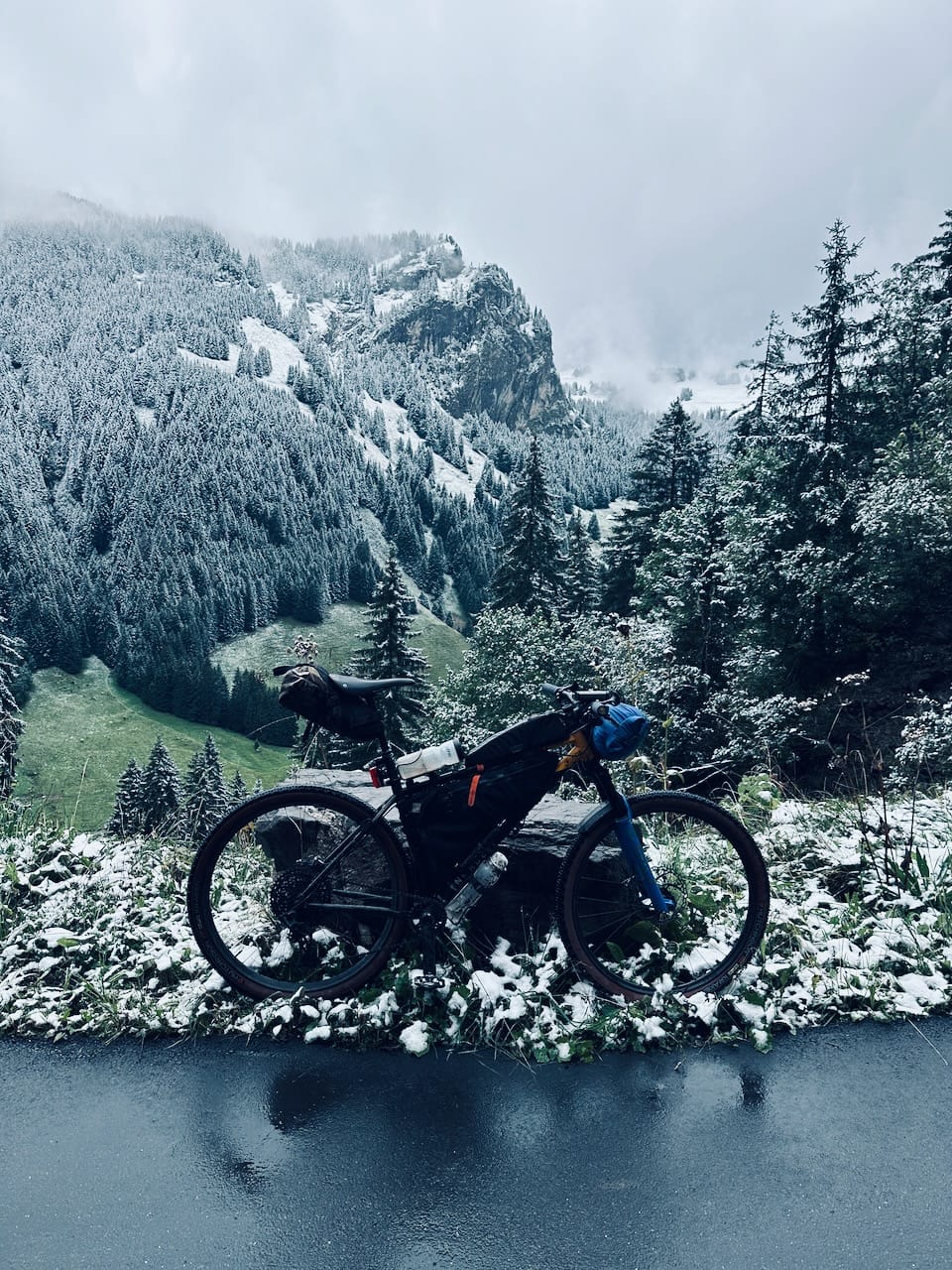
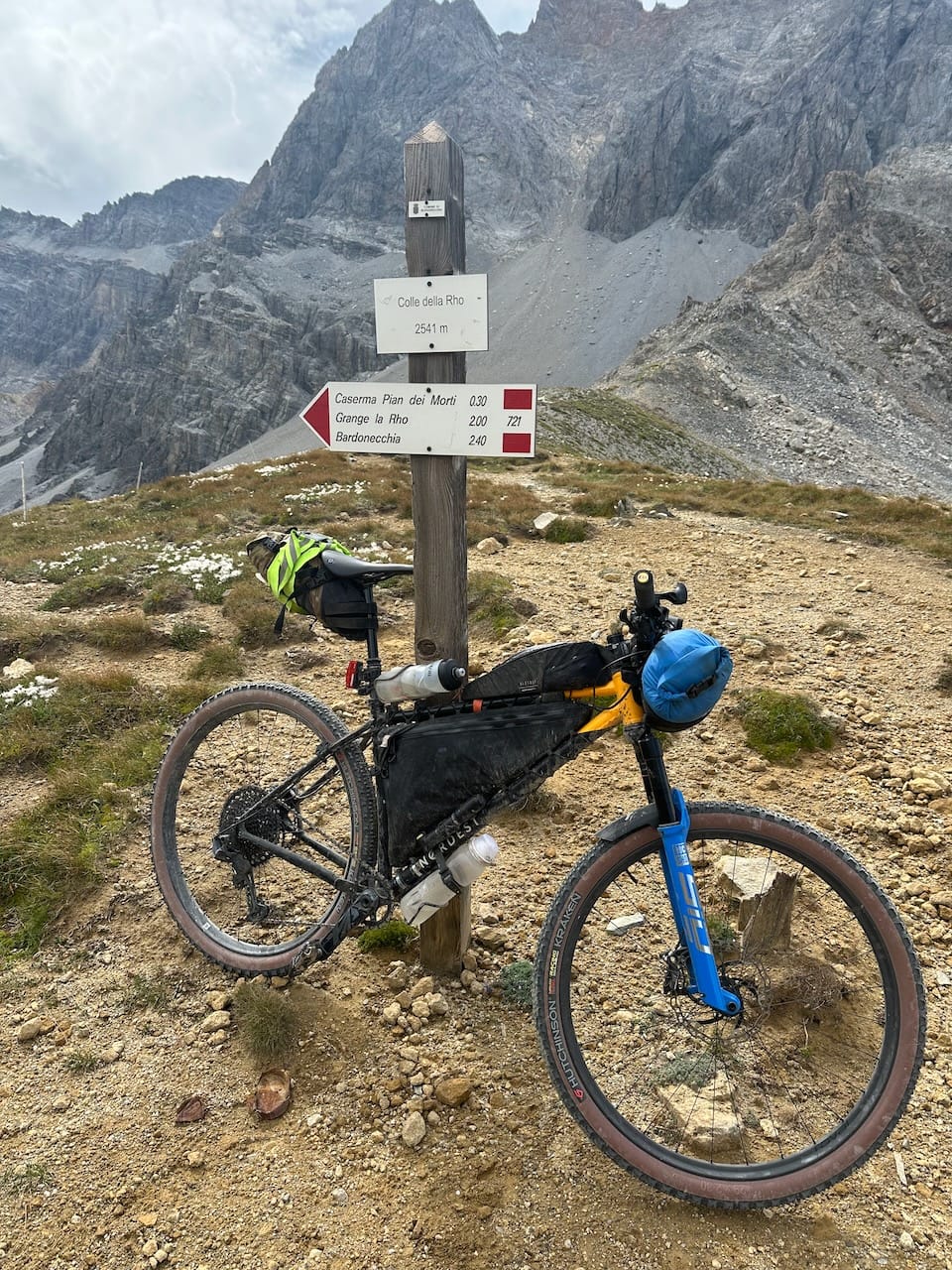
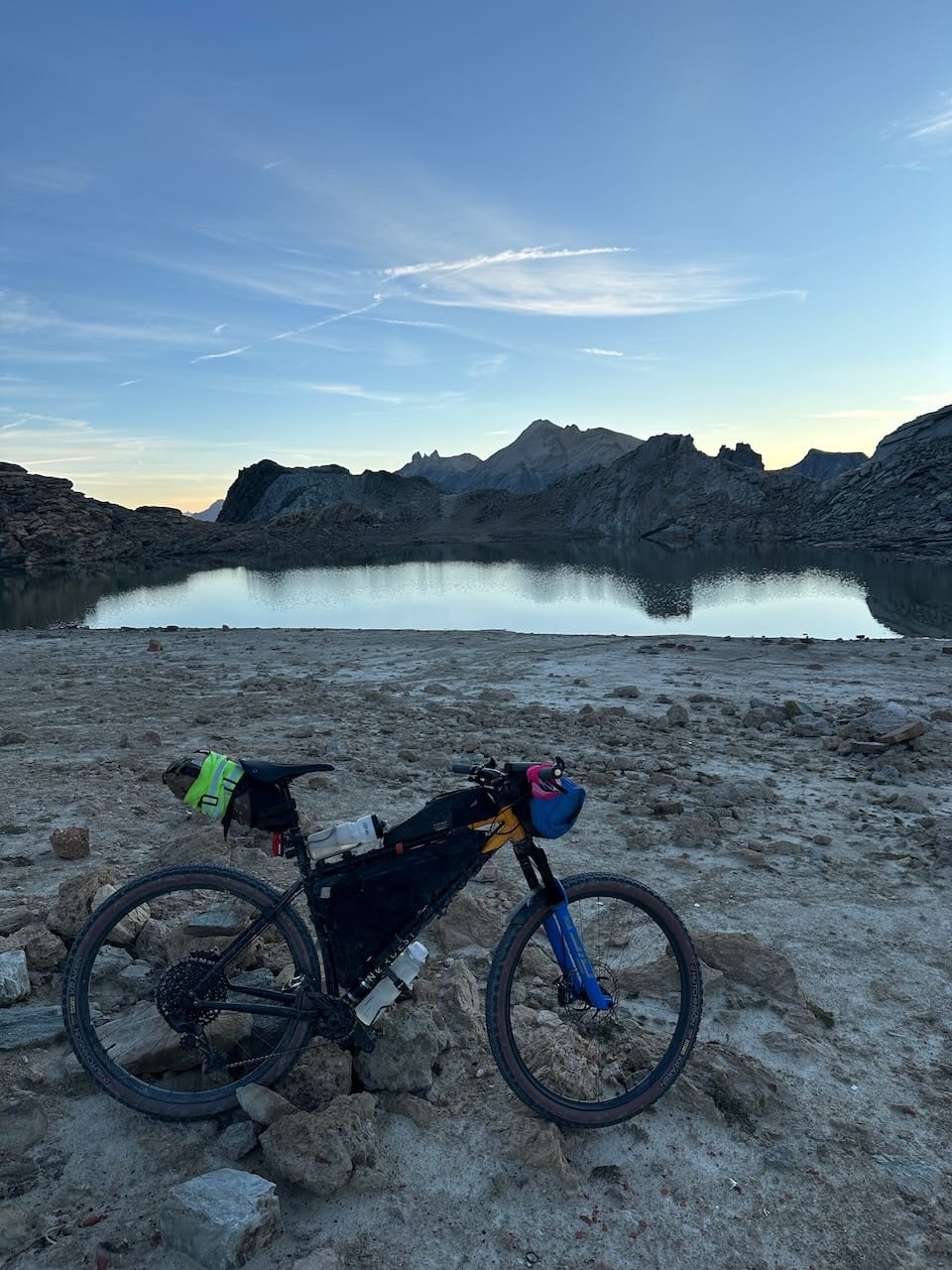
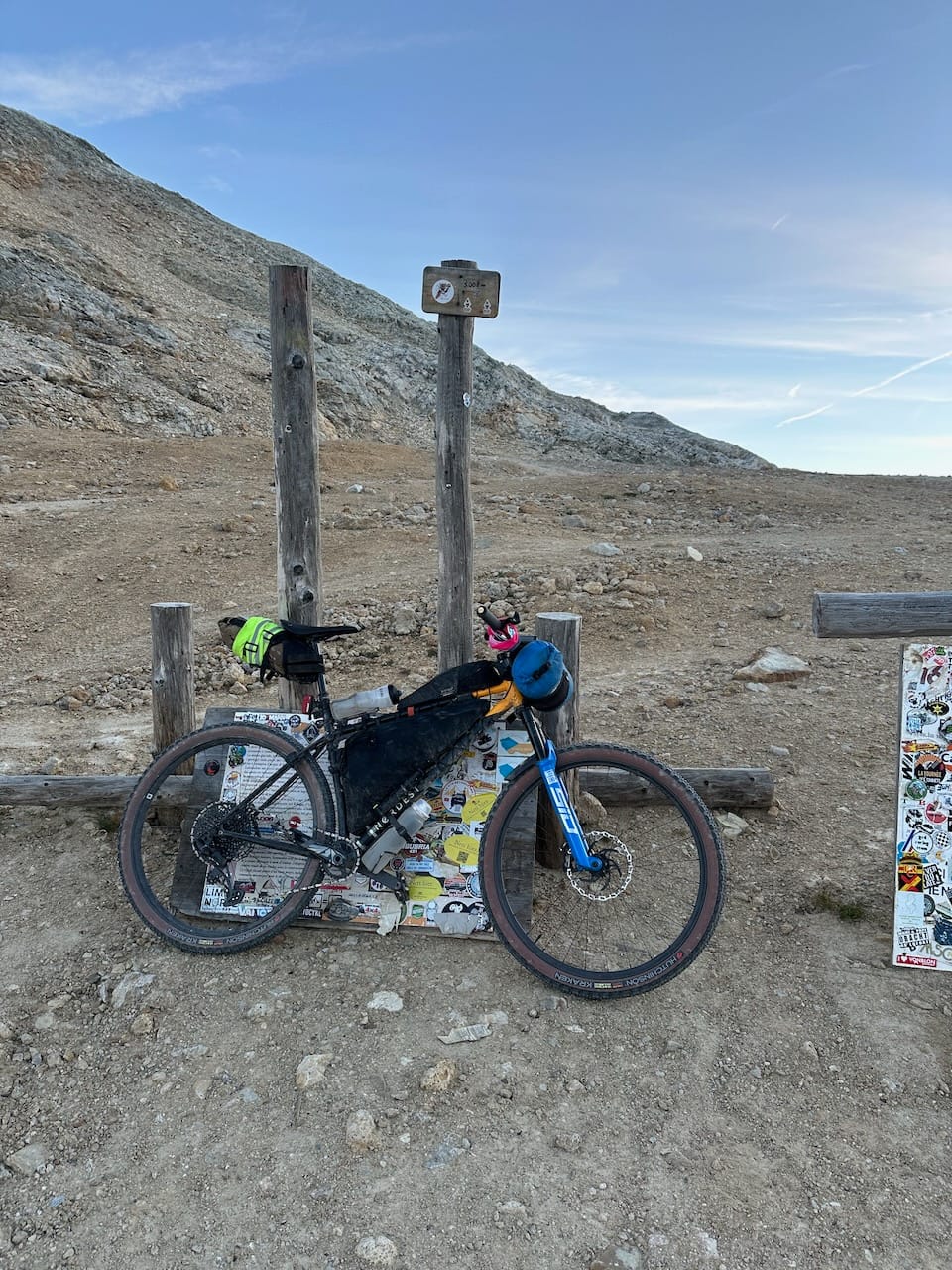
My bike, leaning against various things
The Perfect Bike?
For most of these events, a 120mm full-suspension XC marathon bike would probably be the ideal choice. It would weigh less than a steel hardtail and offer more comfort over long distances, provided it has a lockout and space for luggage. However, I don’t own one, and living in the Alps means I’d rarely use it outside of races. A definite N+1 bike.
Equipment Breakdown
Here’s what I carried with me for the Alps Divide, with my bike weighing about 20kg fully loaded. Based on other riders’ setups, this seems to be about average.
Sleep System
- Bivy: Outdoor Research Helium Bivy.
- Sleeping Bag: Millet 10-degree comfort sleeping bag (“Millet Light Down 5”)
- Mat: Exped Ultra 1R sleeping mat.
- Groundsheet: Emergency foil blanket which doubles as a groundsheet.
This all fits into an 8L dry bag attached to my handlebars using a Straightcut Design harness.
Note: I’m not sold on the OR Bivy. In bad weather, you need a proper shelter or hotel; otherwise, everything not in the bivy gets wet. If the weather’s good, a lighter SOL Escape bivy is sufficient. I’m considering upgrading to a Nordisk Lofoten tent for a little extra weight but more security (if I can stomach the price!). For an event like the Silk Road Mountain Race this would be essential.
Clothing
- Outer Layers: Montane synthetic down jacket (for rain), Gore Endure goretex trousers, Patagonia Dirt Roamer Storm jacket, Pearl Izumi windproof jacket, Endura windproof gloves, BBB neoprene gloves, and some cheap DIY waterproof gloves I picked up en route. Layering worked great!
- Base Layers: Nike cycling tights (doubled as pyjamas), long-sleeve merino base layer, Buff, Sealskinz waterproof socks, and a spare pair of merino socks (I would layer both pairs for wet & cold conditions and my feed stayed dry and warm.
This gear fits into a 10L Oveja Negra saddle pack.
I rode in a merino 3/4 sleeve jersey, POC cargo bibs, and merino socks. I could wash my bibs at the hotel stops, so no need for a spare pair. On my feet I wore a pair of Specialized Recon 3.0 shoes which are sadly worn out now after 2 (pretty hard) seasons ☹️
Electronics
- Navigation: Garmin Edge 540 Solar (didn’t last 24 hours in the rain storm; sent back for warranty).
- Backup Navigation: Garmin Forerunner 745 watch with pre-loaded routes (file-names shortened to be findable on the watch interface).
- Lighting: Ravemen PR2400 (enough to last two nights) and Petzl Aktic Core head torch. 2x rear lights for redundancy.
- Powerbank: 20,000mAh, with all necessary cables and a multi-port fast charger, stored in a Restrap top tube bag.
Spares & Repairs
- Pump: OneUp pump with integrated multitool and tubeless repair kit.
- Tubes & Patches: 2x tubes, patches, glue, and a sewing kit for tire repairs.
- Miscellaneous: Spokes, zipties, duct tape, spare SPD cleat, bolts, a first-aid kit. Toothbrush+toothpaste, chamois cream: Chamois Butt'r Ultra. A high-viz vest.
- Extra capacity: A Restrap Musette for shopping duty / carrying gear to hotel rooms!
All of this fits into a custom Wit Slinger frame bag, with loads of room for food.
Water & Food
I attached two water bottles to my frame, one under the downtube (with a cover for mud) and one on the top tube. This setup provided almost 2L of water, which meant no need for a hydration pack. There’s plenty of drinking water in the Alps, so I often carried too much.
As for food, I always aim to carry more than I think I’ll need before the next resupply. Snickers, Haribo, and salted nuts are my go-tos, but flexibility is key—whatever you can get, as long as it’s calorie-dense. Salt tablets are a must for me to prevent cramping.
All this attached to the bike means the full thing weighs around 19kg before food and water.
What would I leave behind / take?
To be honest.. I used everything with the exception of first aid kit and some spares which I wouldn't want to go without anyway. I could have ditched the sleep kit entirely and just accepted that I'd need to find hotels every night + take an emergency bivy for an actual emergency only. OR I could buy an ultralight tent and forego the need for hotels altogether.
I have also since bought a matching Gore Endure Goretex jacket. The outer fabric of my Patagonia jacket soaks in the water meaning it gets heavy, takes a while to dry out and doesn't breathe so well whilst it is drying out.
I hope that you found this useful in some way!
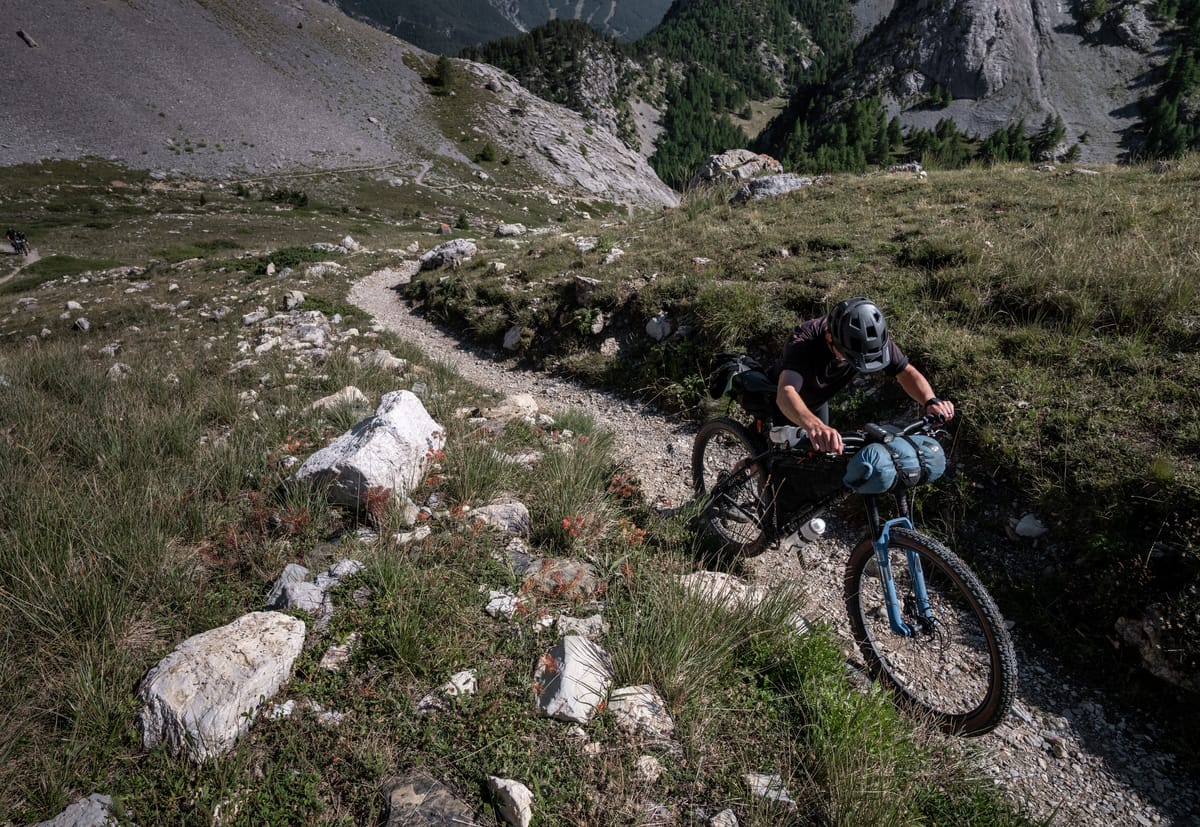
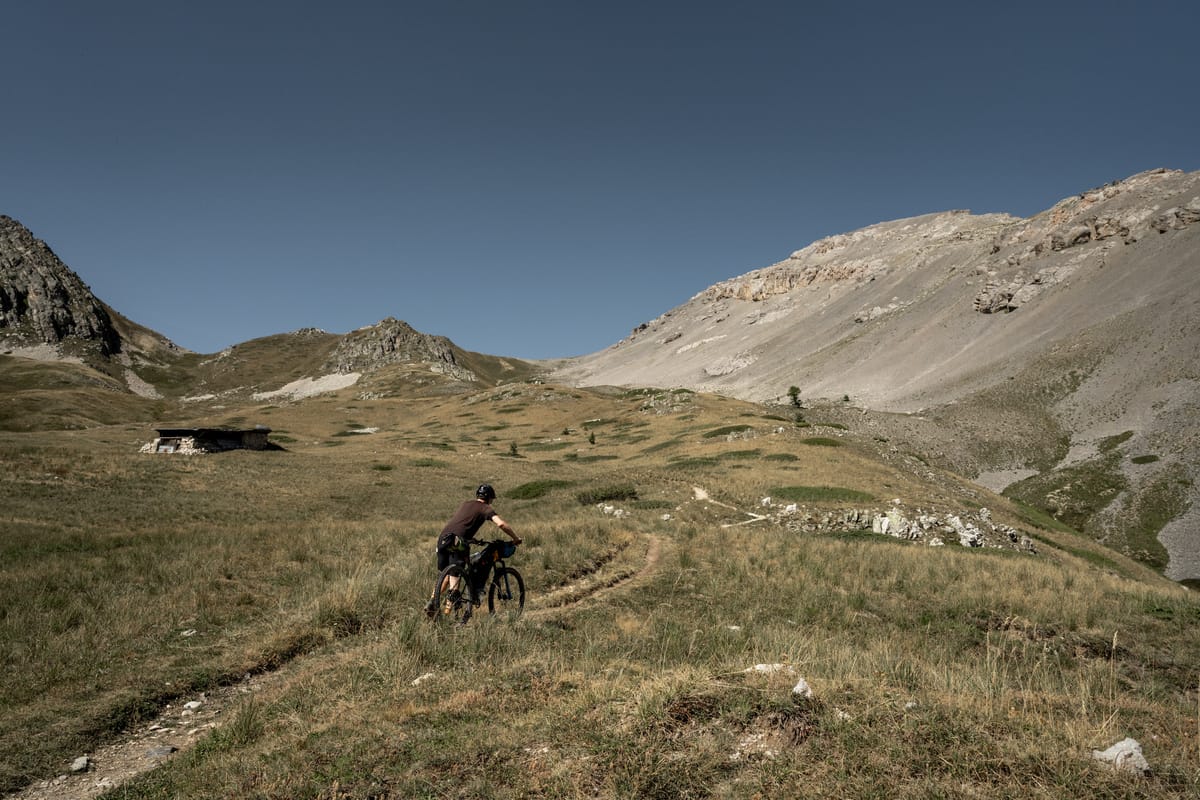



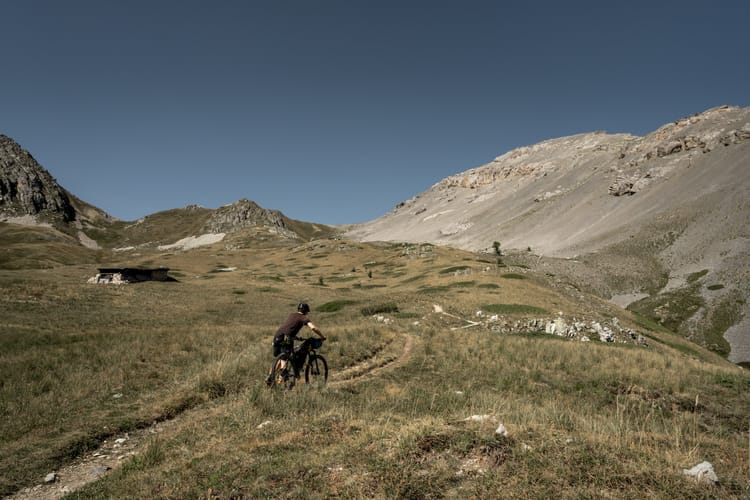
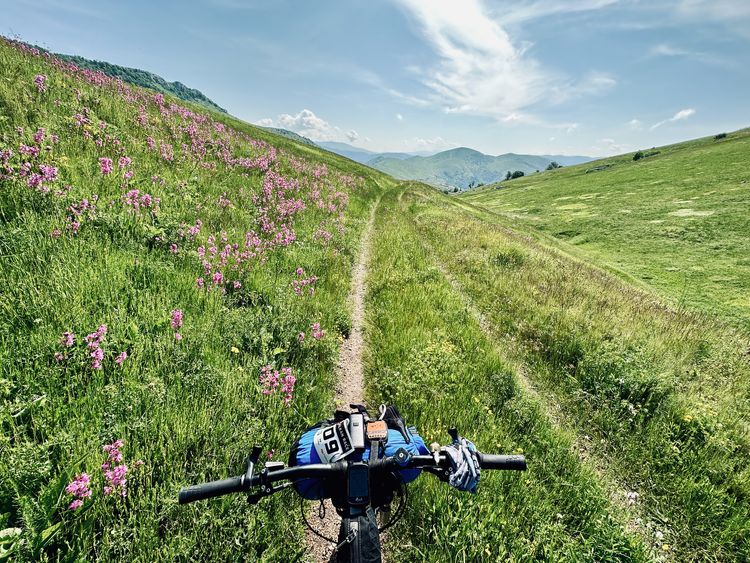
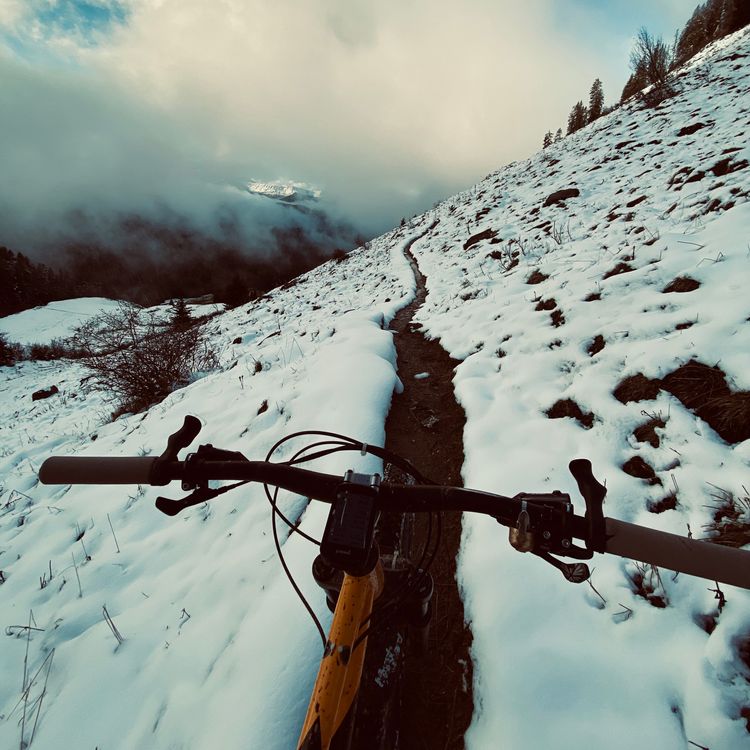
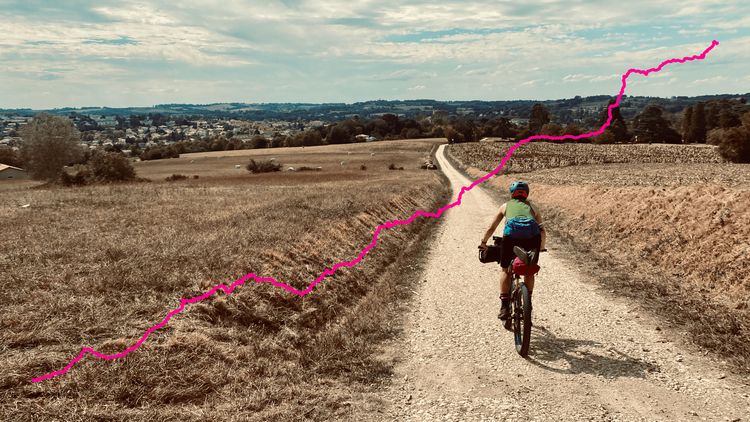
Member discussion